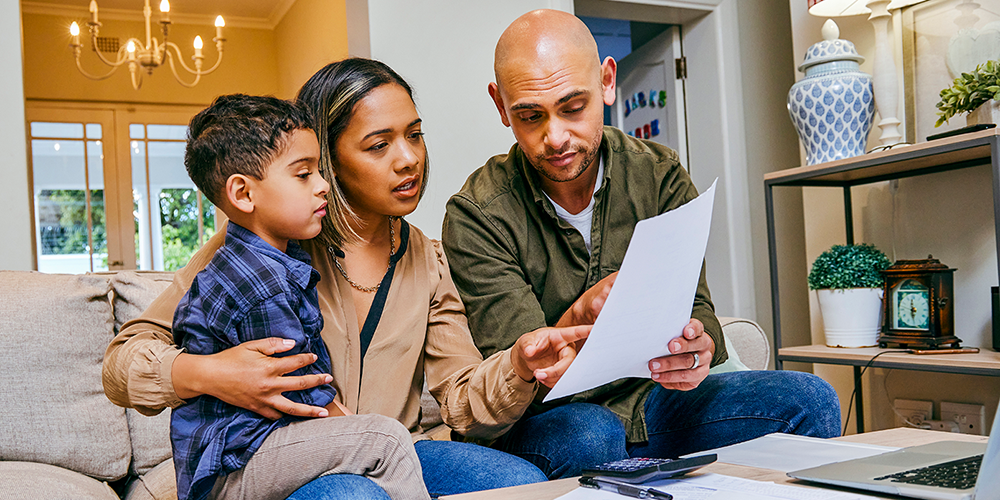To relieve pressure of high energy bills, simplifying assistance programs is necessary
Study shows successes of energy savings programs, like targeted outreach and debt relief
Nearly a quarter of Californians struggled to pay their energy bills in the last year. Amid soaring energy prices and slow recovery from the ongoing pandemic, these unpaid bills are piling up — especially for low-income households.
There are many existing assistance programs that help households pay bills and reduce energy costs. But residents need more help to find and apply for these programs. A new study from researchers at the UCLA Luskin Center for Innovation evaluated a pilot program that aimed to connect vulnerable households with such programs.
“Energy assistance programs are often underutilized,” says Gregory Pierce, study co-author and co-director of the Luskin Center for Innovation. “Some people don’t know the programs exist. Others don’t have the time and resources to apply — and some don’t think the payoff will be worth the effort of applying.”
The study draws lessons from a pilot outreach program run by Valley Clean Air Now (Valley CAN) to identify ways to make these efforts more successful. The pilot connected San Joaquin Valley residents — specifically residents of Kings and Tulare Counties — with opportunities to reduce their energy costs. It built on the emPOWER campaign, a joint effort with the Liberty Hill Foundation to reduce barriers to enrolling households in environmental incentive programs.
Through a unique, adaptive community outreach approach, Valley CAN helped Southern California Edison customers determine eligibility and sign up for more than twenty programs, including a debt relief program (the Arrearage Management Plan, or AMP) and a demand response program to reduce electricity use at key times (OhmConnect, Inc.).
The study identifies several strengths that helped the effort succeed:
- Focusing on debt relief helped to garner interest. With 90 percent of interested households reporting trouble paying their utility bills, debt relief was the most popular form of assistance.
- Valley CAN’s long-standing reputation in the community helped people to build trust in the programs.
- Adaptability was key. Valley CAN adjusted its strategy after seeing low responses during the first week of the pilot. The new tactics increased engagement substantially.
- The program included a variety of novel outreach methods, including a call center and targeted social media ads. The program staff also followed up regularly to keep households engaged.
The pilot helped more than 200 individuals apply for AMP. These applicants came from households with an average income of just over $26,000 a year. Without Valley CAN’s support, many of these households may not have been able to access this assistance.
Even with significant effort to connect households to assistance programs, Valley CAN’s program enrolled only a fraction of the residents whom the programs could help. This was particularly true for programs with smaller benefits; while residents were drawn to AMP, they showed less interest in programs like OhmConnect, with smaller, incremental payoffs.
The Valley CAN program model presents important lessons for policymakers, utilities, and others hoping to make it easier for households to access critical assistance programs, including:
- Support households to enroll in fewer programs with larger benefits.
- Make it easy to apply by simplifying programs and removing barriers to qualifying for assistance.
- Expand funding, both for popular utility debt relief programs and for outreach efforts like this Valley CAN program.
“Reducing energy burden is essential — especially now,” says Kelly Trumbull, study co-author. “Many families are in debt because of the pandemic, and high prices are making it even harder to get out of the red. But outreach programs like this one can help.”
To learn more about this research and Valley CAN’s work, read the study, Supporting Household Access to Complex Low-Income Energy Assistance Programs: Adapting Outreach and Enrollment Strategies in the San Joaquin Valley. To learn more about utility debt in California and the effect of the COVID-19 pandemic, as well as other energy equity issues, visit the Luskin Center for Innovation’s energy equity webpage.







 Photo credit: Mark McClure / Flickr (CC BY-NC-ND 2.0 license)
Photo credit: Mark McClure / Flickr (CC BY-NC-ND 2.0 license)